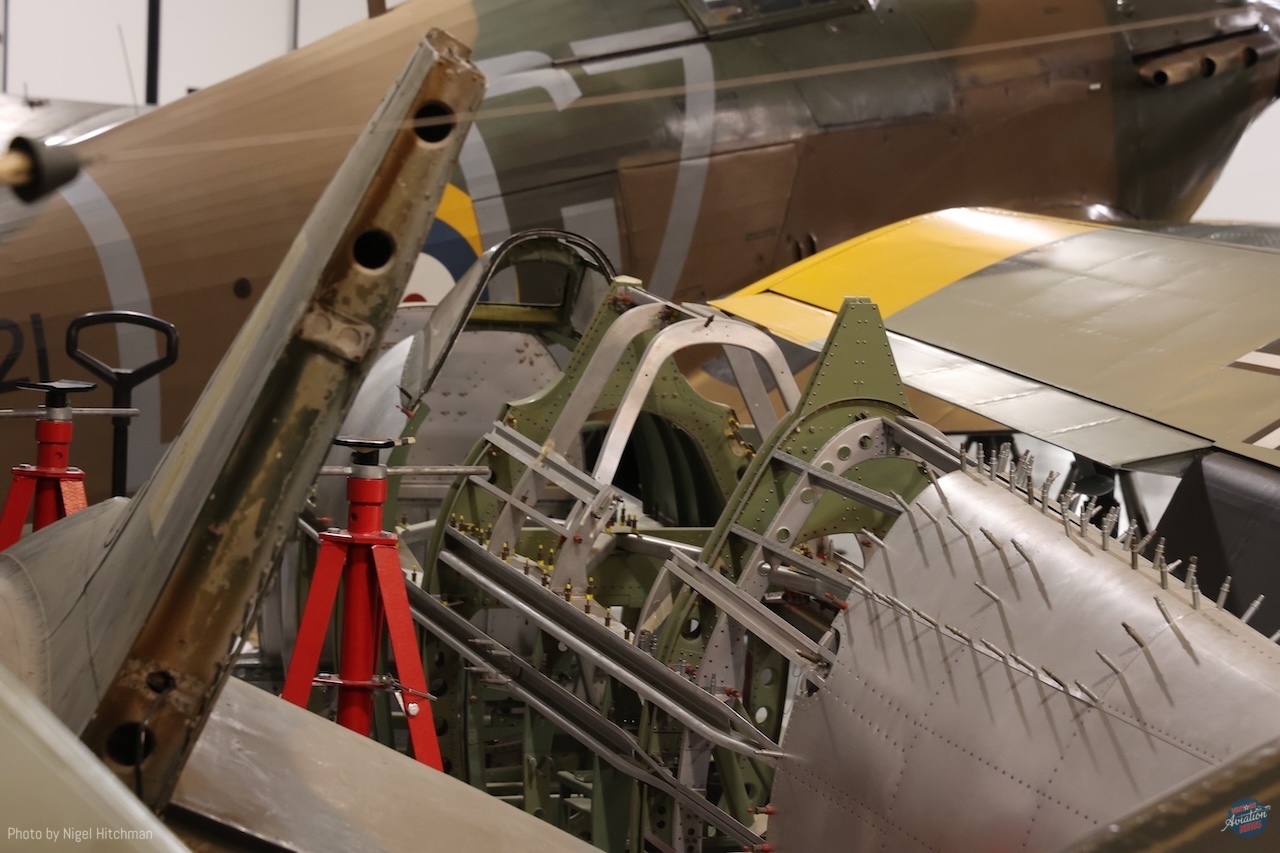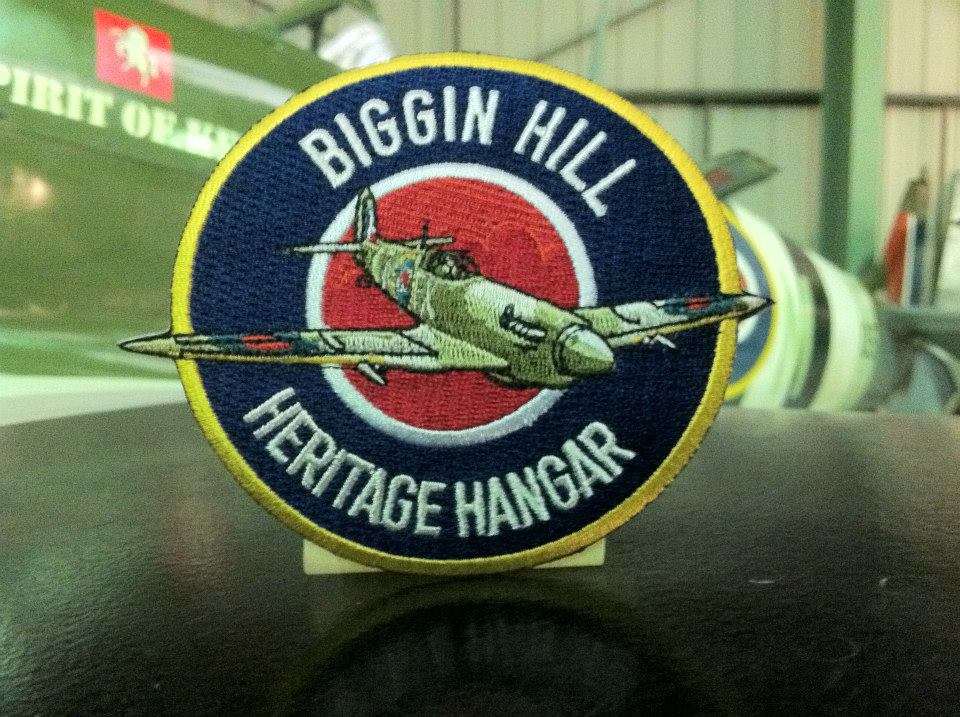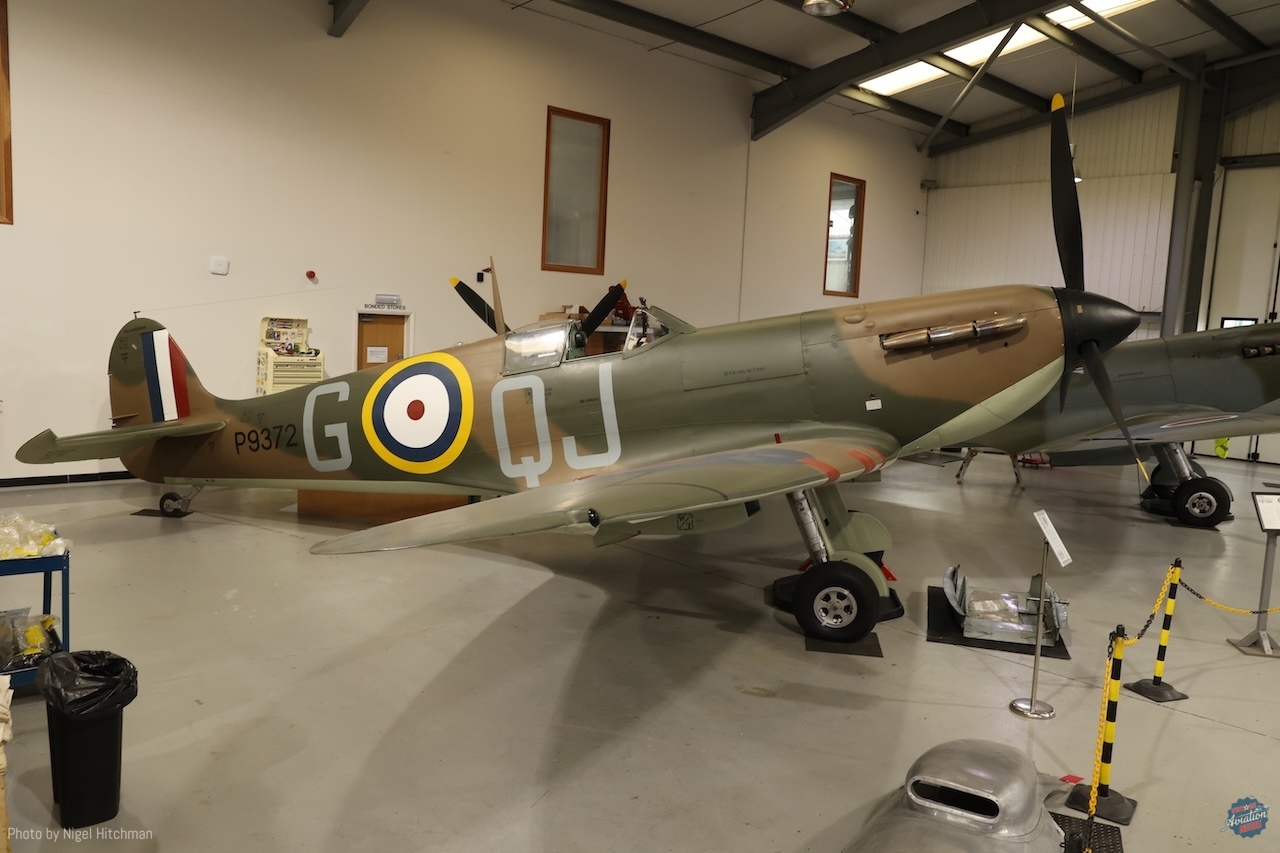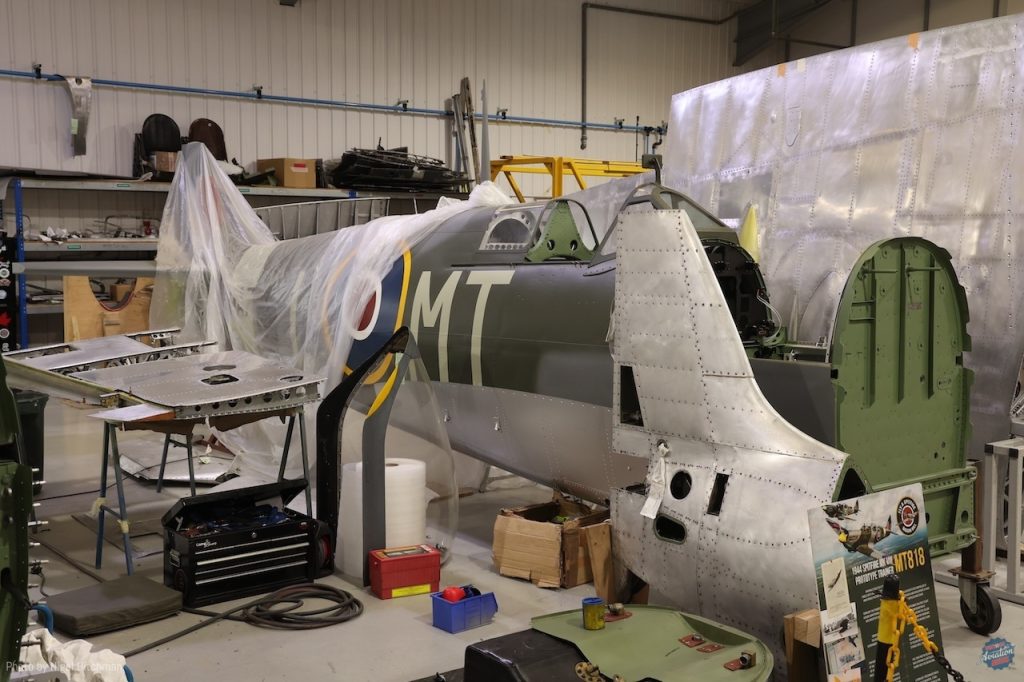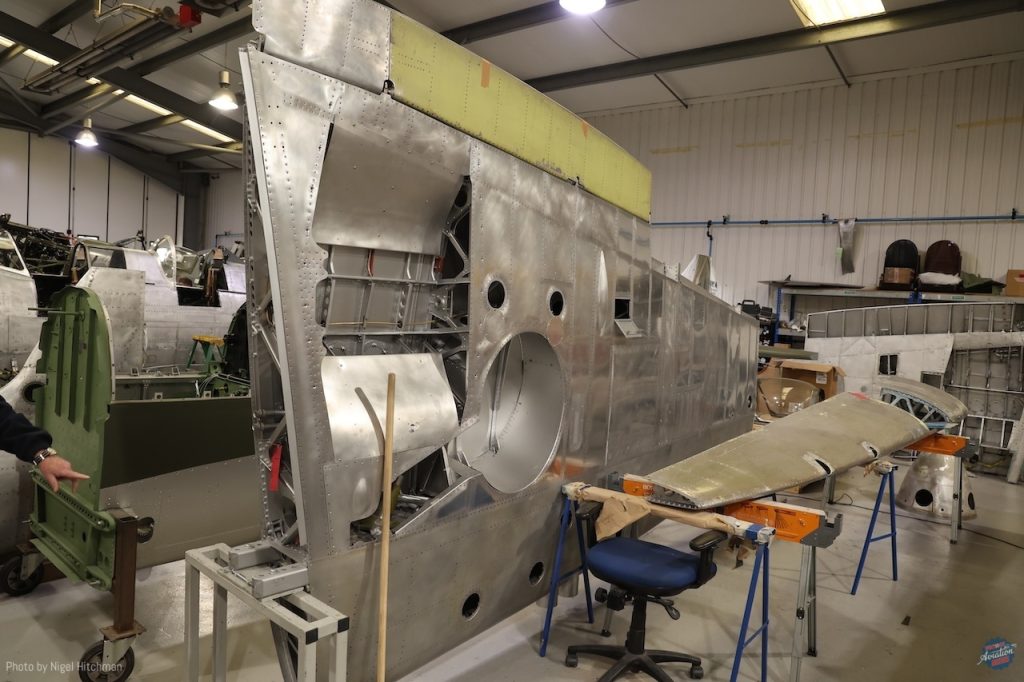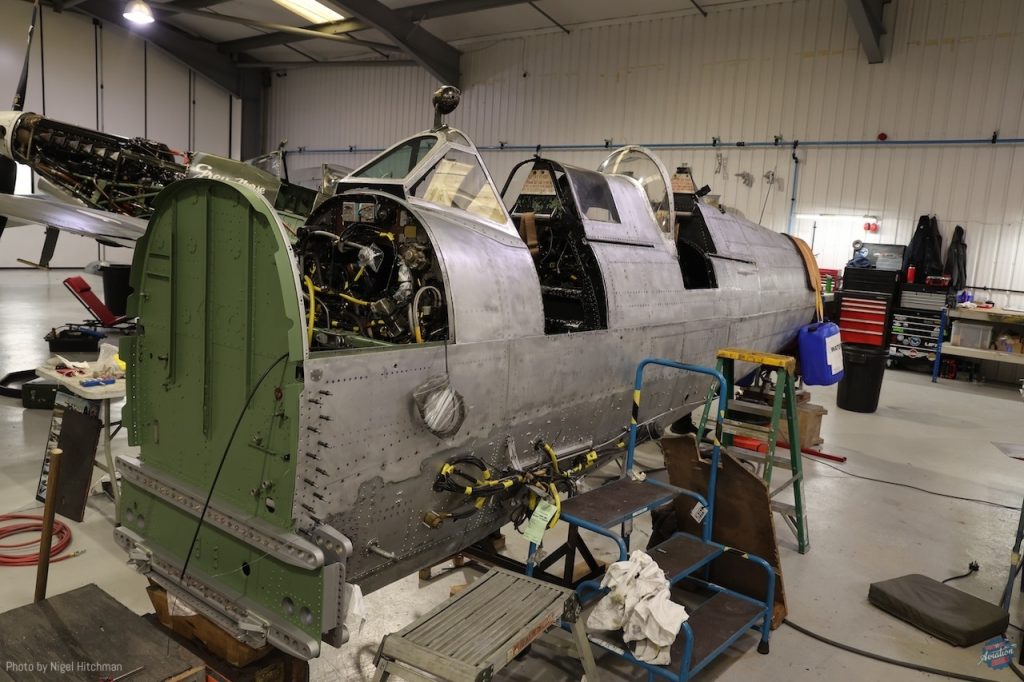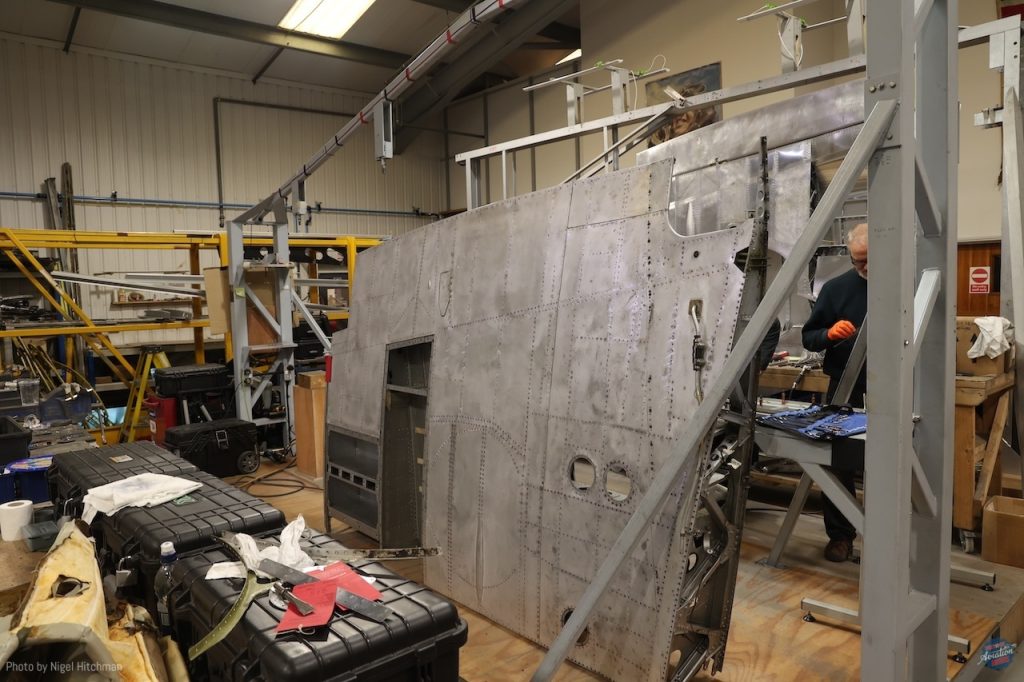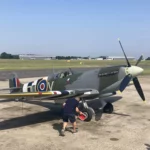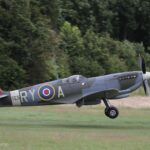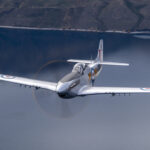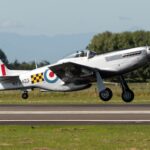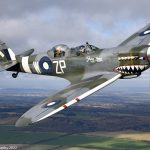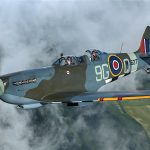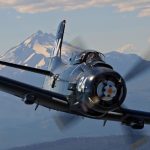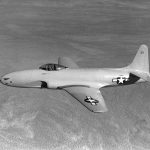Article and photos by Nigel Hitchman
The Biggin Hill Heritage Hangar (BHHH) is home to a unique and constantly changing collection of Spitfires and World War II aircraft. Normally with up to 15 Spitfires on site, you can see numerous airworthy examples alongside others undergoing restoration. You’ll find a 1940s Hawker Hurricane, Messerschmitt 109, Harvard, and vintage Piper Cub on display, plus numerous WWII vehicles and artifacts. During the Christmas holidays, Nigel Hitchman was able to visit the BHHH and report about the status of their restoration and flying aircraft. More than a dozen Spitfires have re-emerged in flying trim from the BHHH in the past decade; the technicians within have remarkable abilities for breathing new life into tired airframes.
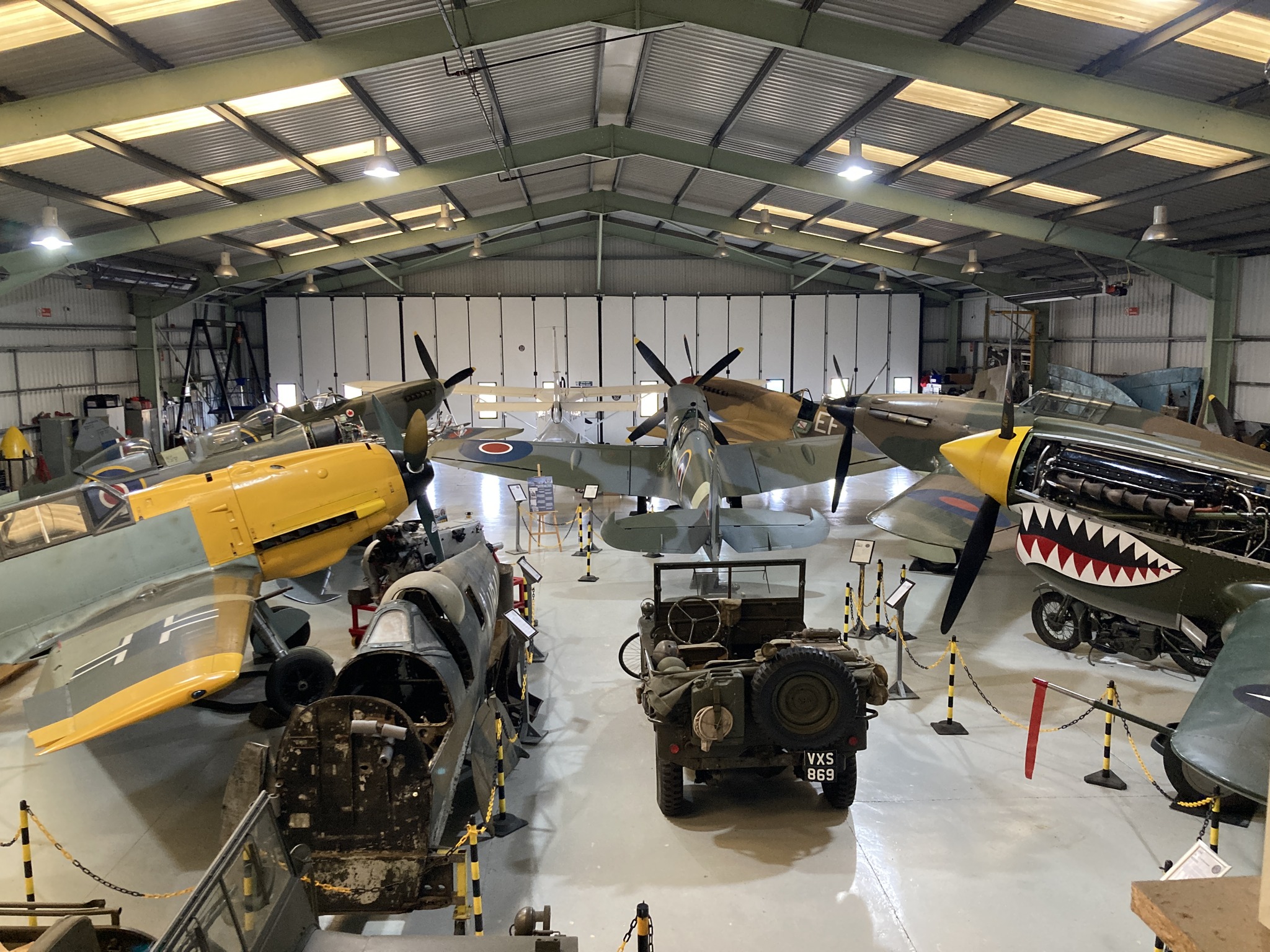
I hadn’t visited BHHH for about two years, and there were quite a few different aircraft, and aircraft on restoration had progressed a lot. The highlight was the newly completed Spitfire 1A P9372/G-CLIH, which had been rebuilt after a crash recovery (many of the parts used to be on the hangar wall!). The engine runs, and the first flight is expected very soon. Flown by 92 Squadron (Sqn) based at Biggin Hill during the Battle of Britain, it was shot down on September 9, 1940 by Me 109s, and the remains were excavated in 1970. It is owned by Frits Van Eerd and is expected to be based in Belgium with his other aircraft once test flying is completed.
Progressing well is MA764 G-MCDB Spitfire F. IX with the fuselage structurally complete and painted and the wings looking close to completion in the jigs. Built in 1943 at Castle Bromwich it was allocated to 122 Sqn and on November 25, 1943 was flying near Lille when attacked by Bf109s, the aircraft was hit and the engine caught fire with the pilot successfully bailing out. The substantial remains were recovered and returned to England in 2006, restoration began at Biggin Hill in 2021 and in 2023 it was reported that this aircraft had been acquired by Ali Ismet Öztürk for his collection in Turkey, however this didn’t happen in the end, with them getting TE517 instead. MA764 is currently registered to Peter Monk.
The very first two-seat Spitfire was MT818, which was initially delivered to the RAF in June 1944 as a standard Mk.VIII, it was repurchased by Vickers in February 1945 and converted to a two-seater, flying again in September 1946 at Chilbolton registered G-AIDN; it flew as a demonstrator from 1947 to 1952, including trials at Boscombe Down and some air racing. After four years of storage, it was reactivated again in 1956 and was bought by Viv Bellamy for his Hampshire Aero Club at Eastleigh (Southampton). There, it was entered in more air races in a distinctive blue scheme. It was bought and flown by John Fairey from 1963 to 1976 and, sometime in the ’70s, was changed to an overall yellow scheme. It was then purchased by George Miller, who had a landing accident in 1978, and it was rebuilt at St. Athan and painted in RAF colors; sold to Jack Erickson in Oregon in 1986 it was displayed in his collection for the next 20 years until sold back to the UK in 2007 when it had a new engine and more restoration work at Kemble and Booker, not flying again until 2016 after which it was delivered to BHHH and joined the two-seater rides program. It has now been dismantled again for a thorough ongoing restoration, as seen in the pictures.
G-AWGB/A58-606 TE308 Spitfire T.IX was delivered to the RAF in 1945 but never saw service; after five years of storage, it was bought by Vickers and converted to a two-seater and delivered to the Irish Air Corps, where it was operated for 10 years and then became an instructional airframe, it was bought in 1968 for the Battle of Britain film and made airworthy after the filming it ended up with Don Plumb in Canada as CF-RAF and was operated for a while with the rear cockpit faired over. Several owners later, it was purchased by Bill Greenwood, who operated it from his Colorado base from 1983 until 2008, visiting many airshows and fly-ins all over the US until it was involved in a ground collision in 2008. Some restoration work was done, but then it was sold to Warbird Experiences at Biggin Hill in 2019, the restoration completed and it was painted in the colors RAAF 457 “Grey Nurse” Sqn; they operated Spitfires in England in 1941 before transferring to Darwin and then other bases in the south pacific in the war against Japan. It’s currently on winter maintenance following a busy rides season.
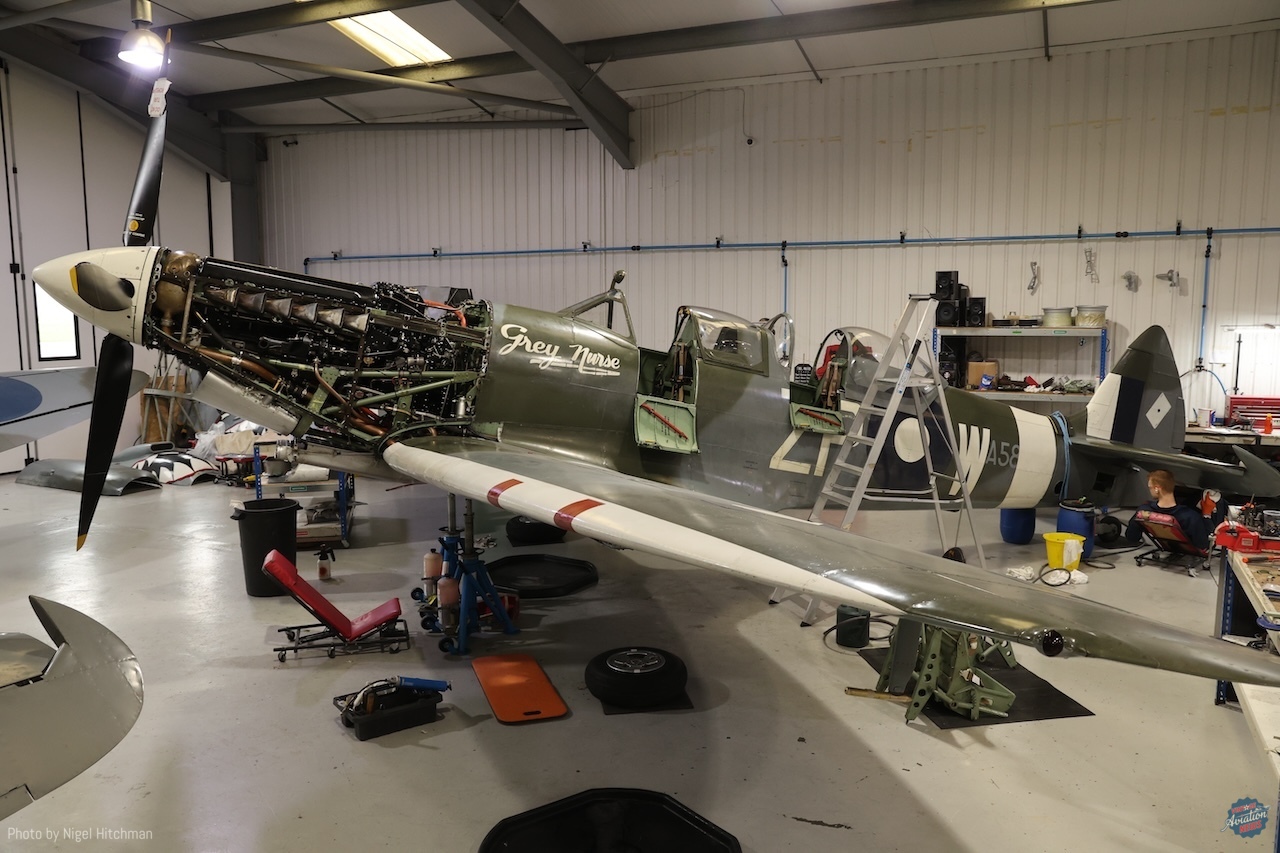
G-BMSB/MJ627 Spitfire T.IX is the other main rides Spitfire, it was built at Castle Bromwich in 1943 as a LF.IXe It was delivered to 441 Canadian Sqn and on September 27, 1944 shot down a Bf109 over Arnhem, that was its only victory but it participated in many missions before being damaged in a forced landing in March 1945. Repairs were completed, and it was placed in storage before being sold to Vickers in 1950 and converted as a two-seater for the Irish Air Corps, with whom it flew until 1960 and then sold; it went through various private owners before being bought by Maurice Bayliss in 1976 who started the rebuild with it flying again in November 1993 from Coventry 50 years after its first flight a short distance away. It remained with the Bayliss family until 2014, when Richard Verall bought it and shortly thereafter sold it to Warbird Experiences at Biggin Hill.
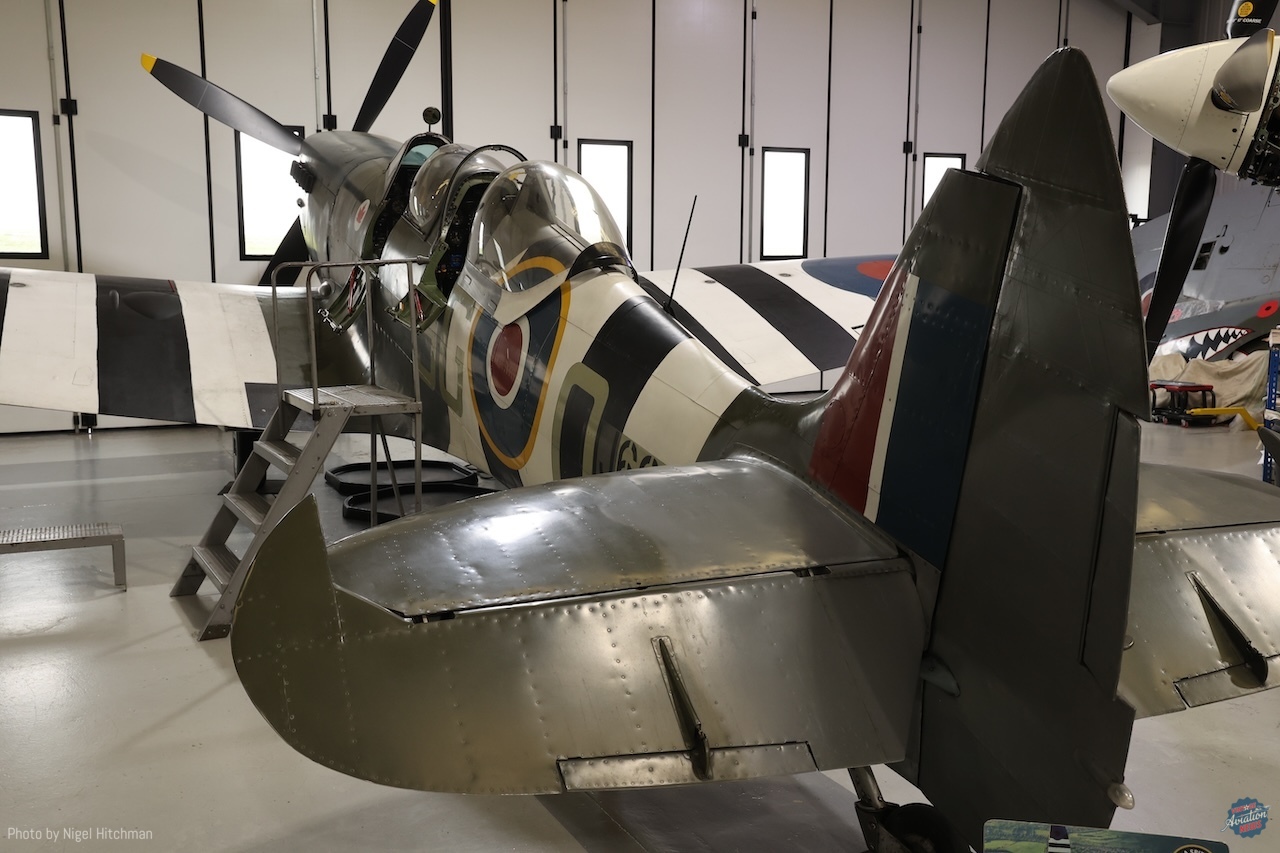
G-MXVI TE184 Spitfire XVI has been temporarily based at Biggin Hill for a number of years with previous owner Stephen Stead, who kept it in Plzen, Czech, for part of the year, and it was very active on the airshow circuit. He sold it to Australian Peter Freedman in 2021, but it has remained at Biggin since then, flying occasionally and gaining the code letters “DGA”.
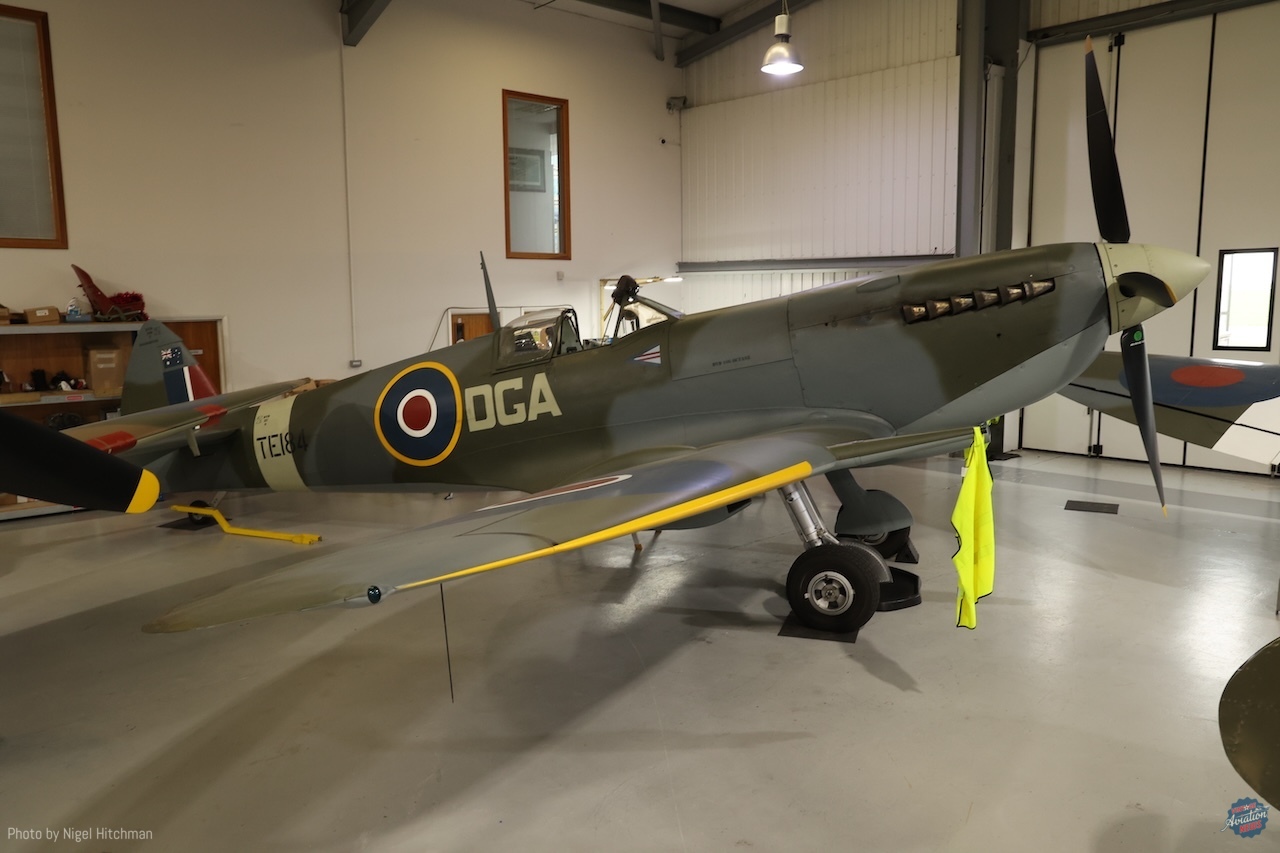
G-SDNI/UB441 Spitfire LF. IXe was delivered to the RAF as ML119 and subsequently served with the Czech, Israeli, and Burmese AF before being bought with three others and some Piston Provosts by American collector David Goldsmith in 1999. It appeared in this condition at Oshkosh in 1999 for sale as a project and came to the UK shortly after. It was bought by Paul Andrews, with whom it is still registered. It has been stored at various locations around the UK and was for sale again at the Goodwood Revival in 2021, about the same time that it moved to Biggin Hill. No work seems to have been done on it since its move from Burma. You can see a full article below.
Ex-Burmese Spitfire Arrives for Restoration at Biggin Hill Heritage Hangar
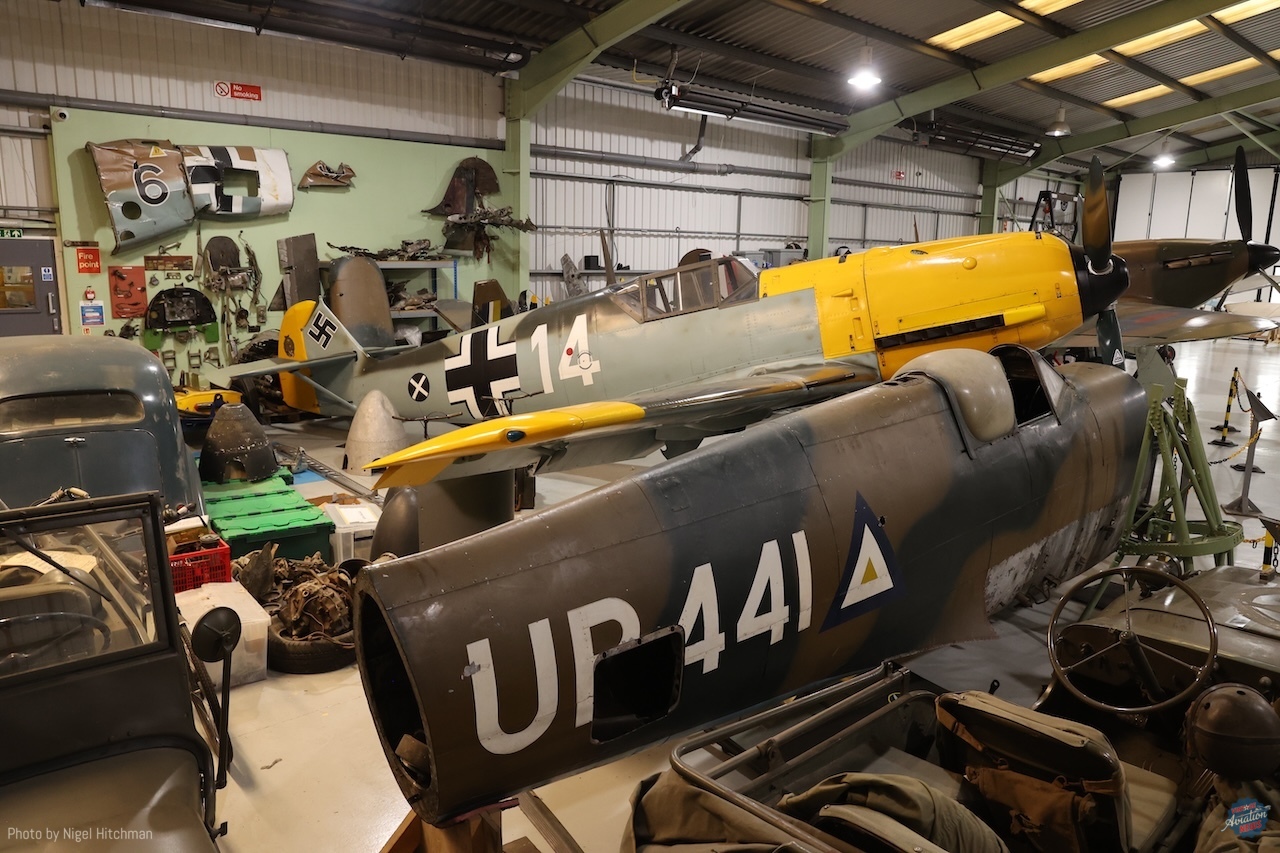
Built at Chattis Hill in 1943, RM694 was based with 91 Sqn at Deanland when it scored its only victory, when it shot down a V-1 rocket in August 1944; it also participated in many interception missions. A forced landing in Belgium due to engine failure a couple of months later ended its wartime service, repaired later went to the Central Fighter establishment at West Rainham before another accident grounded it, and it then had a life as instructional airframe and gate guard. Sold off in 1963, it had various UK civilian owners who displayed or stored it, and its wings were used to rebuild NH904 to static display condition, later made airworthy as Spencer Flack’s G-FIRE, now in the Palm Springs Museum. The fuselage of RM694 was sold in the US in the early ’70s along with RM927 and was stored in the Chicago area; some sources say it came back to the UK with Doug Arnold in 1985 before going back to Florida in 1987, others that it never left the US. Eventually, in the late 90s or early 2000s, it returned to the UK with Paul Andrews and was stored in High Wycombe before coming to Biggin Hill in 2021. It remained registered to Paul Andrews until May 2024, when the CAA canceled the registration. It must be one of the last complete unrestored Spitfire fuselages that isn’t in a museum.
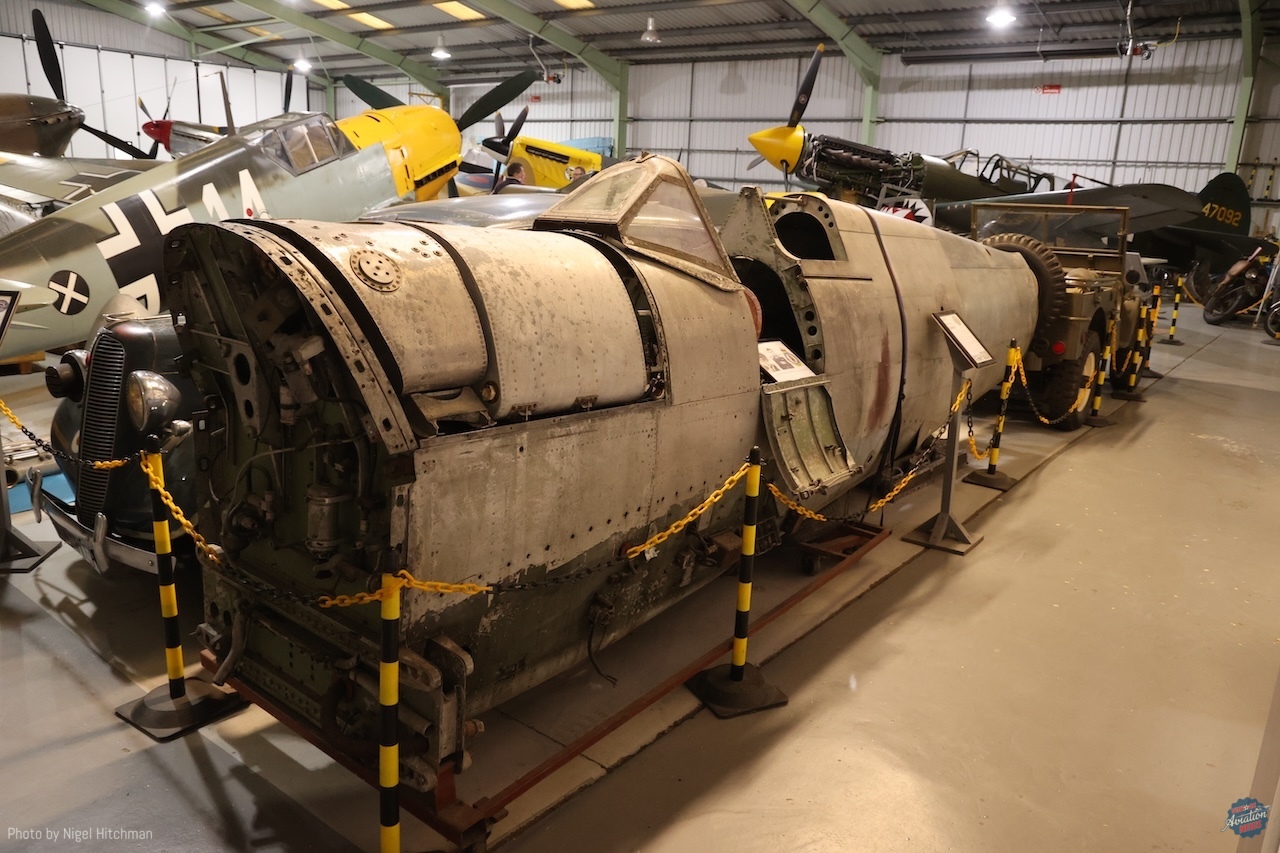
N293FR Curtiss P-40K/N This aircraft was built as P-40K USAAF #42-9749 at Buffalo, New York, in 1942 and served with the 11th AF in Alaska, forced landing in 1943. It was recovered in 1975 and restored to fly, flying again in 1986, it had a variety of owners and colours and was bought by longtime owners Evergreen Air Museum in 1990. Around 2017, it was sold with several other aircraft to the Collings Foundation and removed for restoration, having not flown for some years. The fuselage was converted to a two-seater at Wangaratta, with the rest of the restoration done at Aerofab at Chino, and the identity changed to TP-40N USAAF #42-104721. It flew in the Collings ride program for a year or so, was exported to the UK in 2021, reassembled at Sywell, and flew to Biggin Hill. It remains registered to the Collings Foundation and is reported to get worked on occasionally, but it hasn’t flown for a while. Interestingly, the former Evergreen/Collings Spitfire XIV TE356 N356TE was canceled from the US register on export to the UK in 2019 and has remained stored in the restoration hangar ever since; it has not returned to the UK register.
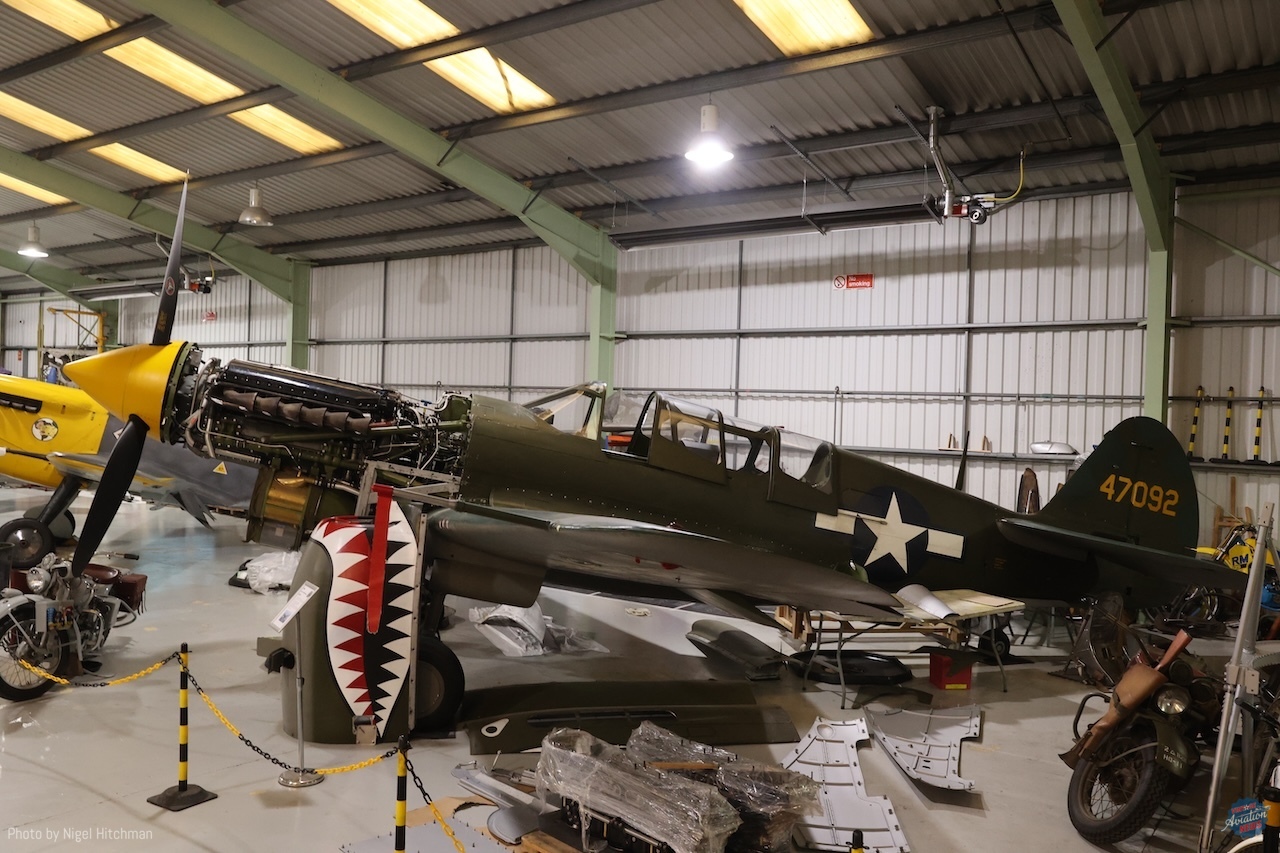
G-CIPB Messerschmitt Bf-109E-4 w/nr 3579 remains on display in the hangar. This was built by Arado in 1939 and saw combat over the UK in 1940 and northern Russia until it was damaged and forced to land in August 1942. It was rediscovered in 1992 and bought by Charleston Aviation in the UK and rebuilt back to flying condition flying again in 1999 and by then owned by David Price/Museum of Flying Santa Monica, sold in 2003 to Ed Russell and flown as CF-EML from near Niagara Falls until 2014 when it was sold and came to the UK. Although registered as Chartered to Biggin Hill Heritage Hangar, the owner is an Australian. It has only flown a handful of times in the UK due to engine issues, and it last flew in 2019. In contrast the Hispano Buchon G-AWHH “White 9” C4K-109 is a regular flyer, this Battle of Britain film veteran returned to the UK in 2015 and was rebuilt by Air Leasing at Sywell flying again in June 2018 and moved to Biggin Hill in 2022.
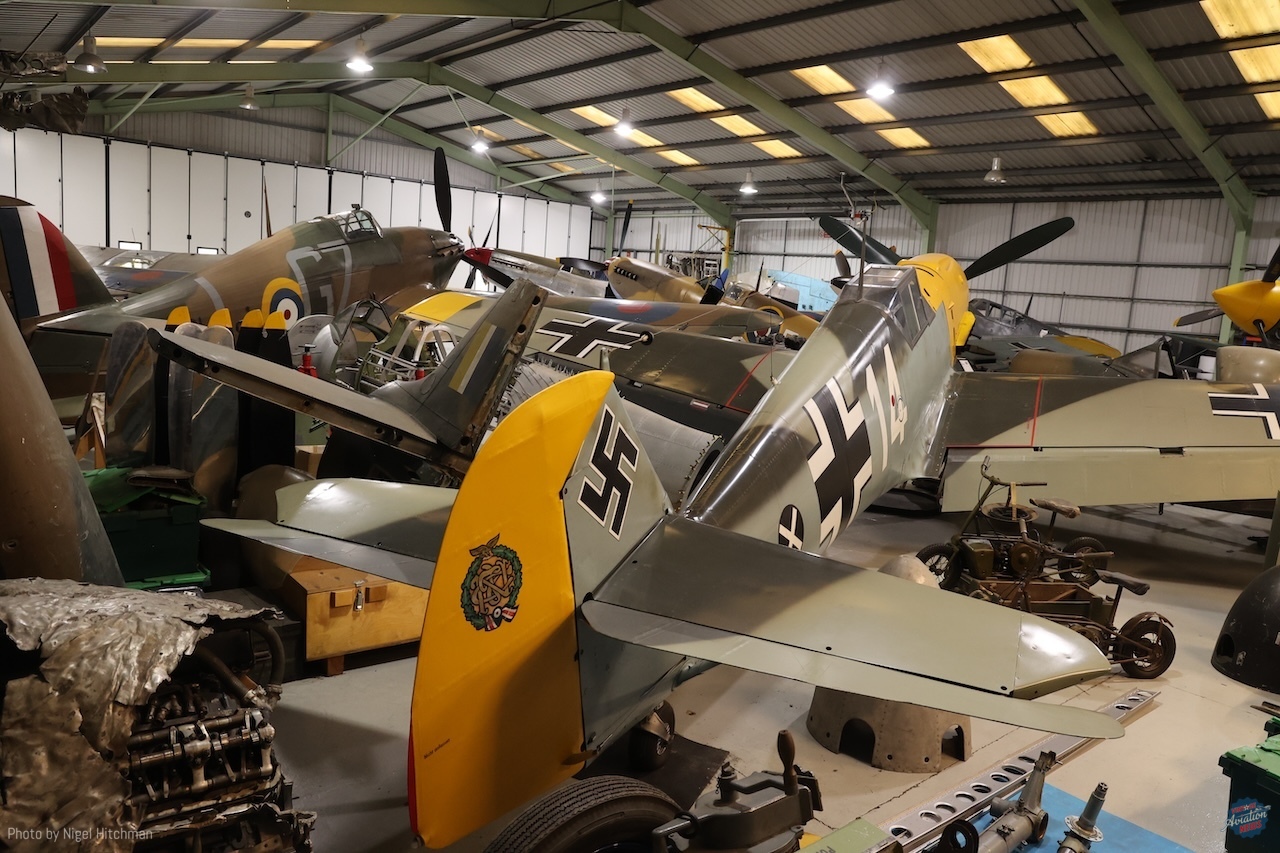
The Mustang in the background is G-CMDK, which is available for passenger flights at Biggin Hill and is also part of the Rolls Royce Heritage Flight; this is the former “Shark” G-SHWN and well-known before that when operated for many years by the late Anders Sæther, Scandinavian Historic flight as “Old Crow” and other colors. Another famous P-51D Mustang G-MCSW, the former Frederic Akary and Vlado Lenoch Moonbeam McSwine, will arrive soon. Also seen in the hangars are the longtime resident Hurricane G-CHTK P2921, an unknown two-seater Spitfire fuselage, and AB910, the BBMF’s Spitfire Vb, nearing completion of its overhaul.
